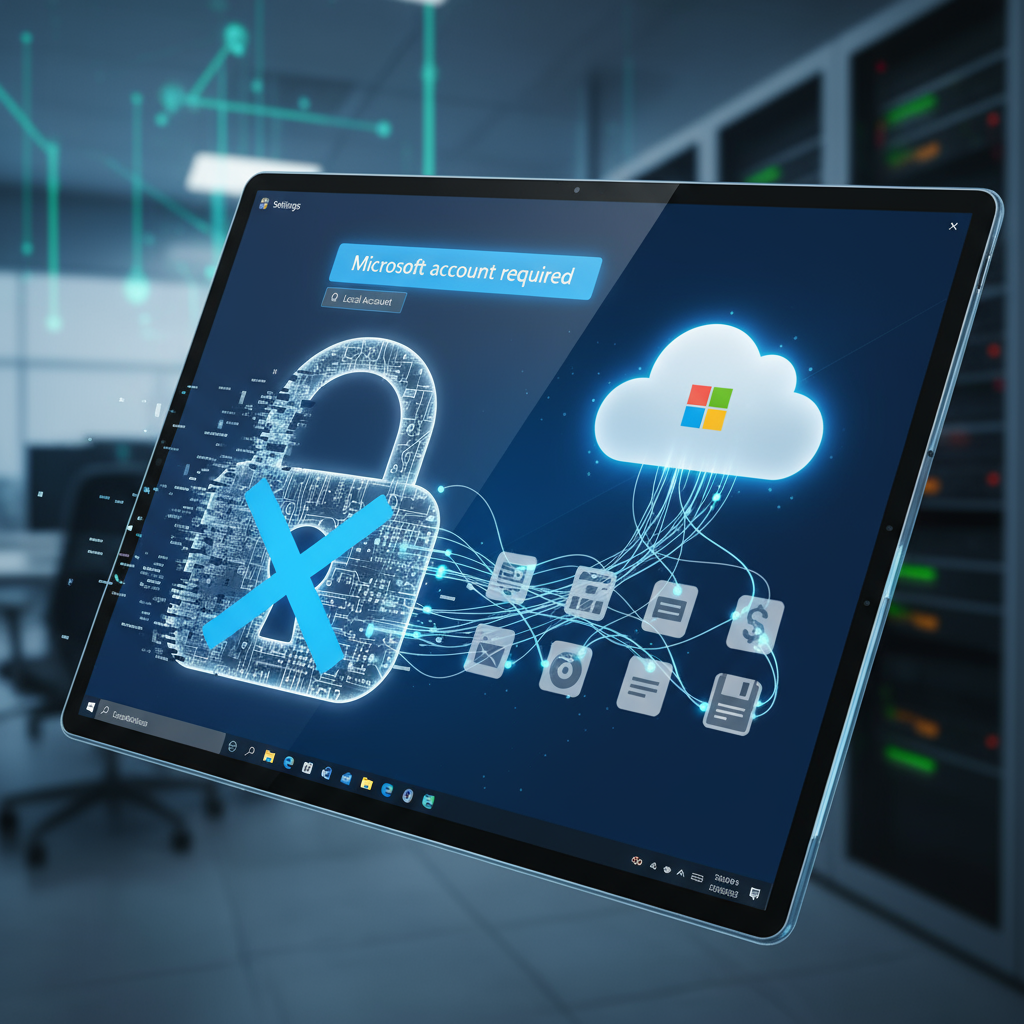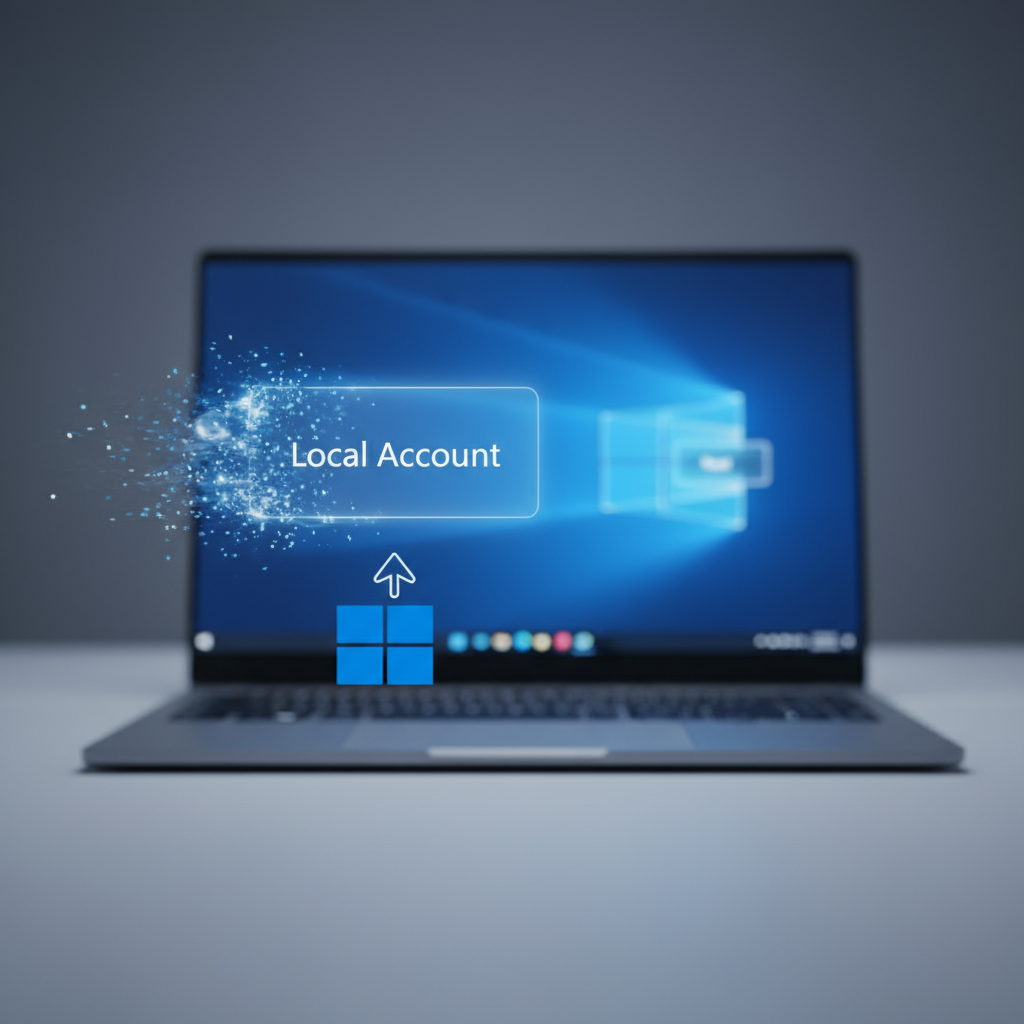The Microsoft Account Mandate: Saying Goodbye to Easy Local Installs in Windows 11

Remember the good old days of setting up a new computer, meticulously choosing your username, and crafting a unique password, all without feeling beholden to a massive tech corporation? For many Windows users, that freedom is steadily eroding. Microsoft, in its relentless pursuit of an interconnected ecosystem, is reportedly making it even harder to install Windows 11 using a local account, pushing users firmly towards a Microsoft Account for initial setup. While the technical workarounds might still exist for the determined few, the writing is on the wall: the era of effortlessly sidestepping Redmond’s embrace is drawing to a close.
This news, initially highlighted by a Reddit post linking to a TechSpot article, has sparked considerable debate among tech enthusiasts and privacy advocates. It’s a move that, while not entirely unexpected, solidifies Microsoft’s strategic direction for its flagship operating system. Let’s delve into what this means for Windows 11 users, both current and prospective, and explore the implications of this increasingly account-centric world.
The Disappearing Act: Where Did the Local Account Option Go?

For a while now, installing Windows 11 has presented a challenge for those wishing to avoid a Microsoft Account. Early versions required disconnecting from the internet during setup to force the local account option. Later, the “oobe\bypassnro” command in the command prompt offered a more direct, albeit less intuitive, route. However, the latest reports suggest that Microsoft is actively closing these avenues, making the process significantly more cumbersome, if not entirely impossible for the average user.
Imagine this scenario: you unbox your brand-new laptop, eager to get started. You power it on, and the familiar Windows 11 setup wizard appears. You breeze through language and region settings, only to be met with a screen demanding a Microsoft Account. There’s no readily available “skip” or “I don’t have one” option that leads to a local account setup. For many, this is where the journey ends, and they reluctantly create or log in with a Microsoft Account, unaware of the potential alternatives or the implications of doing so.
Why the Push? Microsoft’s Ecosystem Strategy
Microsoft’s motivation for this persistent push towards Microsoft Accounts is multifaceted and deeply rooted in its business strategy. Firstly, it’s about data synchronization and personalization. A Microsoft Account seamlessly integrates various Microsoft services like OneDrive, Office 365, Edge browser settings, and even your Xbox profile. This creates a unified experience across devices, making it easier for users to pick up where they left off and access their data from anywhere. From Microsoft’s perspective, this enhances user experience and stickiness to their ecosystem.
Secondly, it’s about monetization and engagement. The more users are logged into a Microsoft Account, the more opportunities Microsoft has to offer its services, gather usage data (anonymized or otherwise), and subtly nudge users towards subscriptions like Microsoft 365. It provides a clearer picture of their user base and allows for more targeted advertising and product development. For example, if you use OneDrive extensively, Microsoft might highlight premium storage plans or other related services.
Lastly, it can be viewed as a move towards enhanced security and device recovery. A Microsoft Account linked to your Windows installation can simplify password resets, remotely lock or wipe a lost device, and enable features like “Find My Device.” While these are legitimate security benefits, independent users often prefer to manage their own security protocols without an overarching corporate umbrella.
The User’s Dilemma: Privacy vs. Convenience
For independent users and privacy advocates, this tightening grip on the initial setup process raises significant concerns. The primary objection revolves around privacy. A local account offers a degree of separation from Microsoft’s data collection apparatus. While Windows itself collects telemetry data, linking your operating system to a personal online account undoubtedly provides Microsoft with a more comprehensive profile of your digital habits.
Another concern is control and autonomy. Some users simply prefer to have complete control over their operating system without the perceived “nagging” or integration of cloud services they may not use. They value the simplicity and independence of a local account, viewing the Microsoft Account mandate as an unnecessary intrusion.
However, it’s also important to acknowledge the convenience aspect. For many mainstream users, the seamless integration offered by a Microsoft Account is genuinely beneficial. Automatic syncing of files, device settings, and even browser history across multiple devices can be a significant time-saver and enhance productivity. The challenge lies in finding a balance that satisfies both privacy-conscious users and those who prioritize convenience.
Navigating the New Landscape (For Now)
While Microsoft’s intention is clear, the tech community is resilient. For those absolutely determined to install Windows 11 with a local account, current workarounds, such as specific command prompt entries (like the aforementioned “oobe\bypassnro”), might still function for a time. However, these methods often require a degree of technical comfort and are subject to change with future Windows updates. It’s a cat-and-mouse game where Microsoft is consistently patching and closing these “loopholes.”
For many, the path of least resistance will be to simply create a Microsoft Account. If you choose this route, remember to review your privacy settings within Windows 11 and your Microsoft Account dashboard. You can often limit data collection and personalize your advertising preferences. However, the fundamental link remains.
The Future of Windows: An Always-Connected Experience?
This move is indicative of a broader trend in the tech industry: the shift towards an “always-connected” and account-based user experience. From smartphones to smart home devices, the expectation is that your digital life will be integrated and accessible from anywhere. Microsoft is simply aligning Windows 11 with this prevailing paradigm.
For now, the ability to easily install Windows 11 with a local account is fading into memory. As savvy users find new ways to bypass restrictions, Microsoft is likely to continue its efforts to encourage, or even enforce, the use of a Microsoft Account. Whether this ultimately benefits or alienates its user base remains to be seen, but one thing is clear: the way we interact with and set up our Windows machines is undergoing a significant, and perhaps irreversible, transformation.

